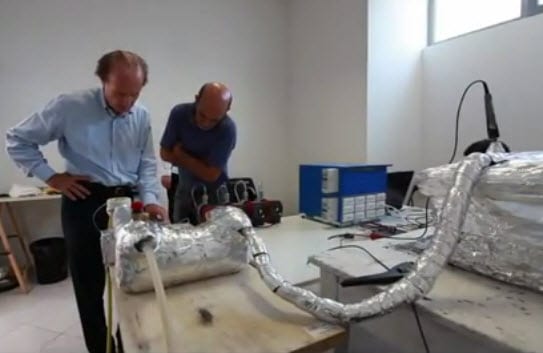
MIT researchers develop new catalyst that is far more powerful than contemporary models.
November 24, 2011Researchers from the Massachusetts Institute of Technology have discovered a new highly efficient catalyst that can split oxygen atoms from water molecules, leaving hydrogen behind.
The catalyst, which is made up of cobalt, iron and oxygen, is being called the most effective catalyst ever discovered by MIT researchers. It can be used in hydrogen fuel cells and can also be used to make hydrogen storage more efficient. Researchers will begin testing the catalyst excessively in the coming months.
The catalyst may mark the beginning of a new era for alternative energy. For fuel cells, the catalyst will be able to produce nearly 10 times more hydrogen then traditional, platinum based materials. The catalyst can also be used in rechargeable lithium-ion batteries to make them charge faster.
Overall, the discovery is likely to significantly reduce the cost of alternative energy technology.
Earlier in the year, Daniel Nocera of MIT developed the world’s first artificial leaf – a material that can perfectly replicate photosynthesis. The team behind the new cobalt-based catalyst, led by professor Yang Shao-Horn, will be teaming with Nocera to make a new energy system that, if successful, will create a fully self-sustaining energy system that can generate huge amounts of electricity. Both teams hope to have a working prototype ready by the end of next year.
The discovery of the new catalyst could make fuel cells a more viable option for those looking to adopt alternative energy.



 With over 15 years of reporting hydrogen news, we are your premier source for the latest updates and insights in hydrogen and renewable energy.
With over 15 years of reporting hydrogen news, we are your premier source for the latest updates and insights in hydrogen and renewable energy.